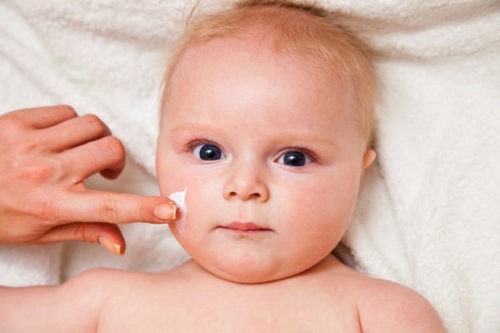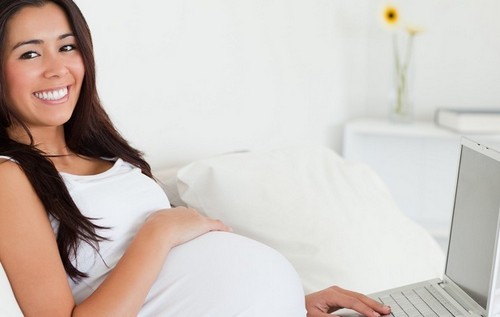As soon as the child is born, parents begin to take care of him, paying attention to any changes in the state of the baby. Therefore, the occurrence of any symptoms is always alarming for moms and dads.
An allergy to a baby’s face can develop due to a variety of reasons related to violations by a nursing mother’s diet, medications, the use of inappropriate powder or baby care products.
Whatever factors contribute to the occurrence of allergies on the baby’s face, this always scares young parents. The fears are fully justified, because ignoring the problem can lead to serious consequences.
However, with the timely establishment of the cause of the response of the body and the appointment of the correct treatment, mom and dad will protect their baby from all sorts of complications.
Why is an allergy manifested on a baby’s face?
Many mothers will confirm that in infants, a rash with allergies appears most often on the cheeks. There are some assumptions about the reasons for this localization.
It is known that the skin of newborns is very different in structure from those of an adult. They are more subtle and vulnerable. Therefore, the effect of any environmental factors on unprotected skin areas contributes to the emergence of responses. And since the face of the baby is almost the only part of the body that is not covered by clothes, the tendency to develop allergies in this area increases.
Another likely cause of the rash on the baby’s cheeks is increased vascularization of the scalp. When an allergen enters the body, various biologically active substances are released, under the influence of which the blood vessels expand. This causes allergies on the cheeks of infants in the form of redness or rash.

Causes of an allergy in a child
Parents are often interested in what allergies can be on a baby’s face. The reasons are many, and they can be varied. Identification of factors that contributed to the onset of symptoms of the body’s response is an integral part of rational treatment.
The main causes of facial allergies in an infant can be:
- Hereditary predisposition. It has been proven that children whose parents are prone to allergic reactions are also at risk. Sometimes an allergy can “get” the child from grandparents or other relatives.
- Mom’s nutrition. If the mother during pregnancy was addicted to certain foods, then the likelihood of allergic reactions in her baby increases. Moreover, they can develop not only after the use of these ingredients.
- Violations of lactating mom’s diet. The body of children in their first year of life is most sensitive to any changes in both the environment and diet. Therefore, if the mother used allergens in the lactation period, elements of the rash immediately appear on the face of the newborn, which was caused by food allergies. Prohibited foods during breastfeeding include citrus fruits, chocolate, red berries and vegetables, cocoa, nuts, honey, and chicken eggs.
- Bad habits of the mother. If a woman during pregnancy, as well as during lactation, abuse tobacco and alcohol, this increases the risk of developing immune reactions in the baby. Bad habits lead to other serious consequences.
- The introduction of the first feeding. New products often cause allergies on the face and body of the baby. Parents should carefully monitor the health of the baby after the introduction of the first feeding. Equally important is the proper preparation of dishes.
- Cosmetics. Often, an allergy on the face in infants occurs after the use of childcare products. These include creams, powders, soap, shampoos. The composition of such funds includes many components that contribute to the appearance of responses of the immature immune system of the baby.
- Constant overfeeding. It is known that due to frequent overeating, the children’s digestive system begins to perform its functions worse. This can lead to the development of allergic reactions to previously familiar foods.

In addition, the appearance of redness and rash on the baby’s face, as well as any other symptoms, may occur due to contact with dust, feathers, animal hair or after taking medications.
It is important for parents to determine as soon as possible what the allergy in the baby on the face may be. This is necessary to quickly eliminate the provoking factor and prescribe therapy.
Main symptoms
Often, mothers and fathers are interested in pediatricians, what exactly does an allergy on the face of newborns look like, because at this age a hormonal rash or sweating becomes possible. Symptoms of the response of the children’s immune system are somewhat different from other conditions.
For allergies in children of the first year of life, the following is characteristic:
- Primarily skin reactions occur primarily. They can appear in the form of a rash, redness, peeling, blisters.
- An allergy on the face of a baby manifests itself and progresses quickly, sometimes immediately after a provoking factor enters the body, so it is important to start treatment as soon as possible.
- As a rule, skin reactions are accompanied by unpleasant sensations, the rash is very itchy, due to which the baby becomes moody.
- Concomitant symptoms may occur – tearing of the eyes, runny nose, swelling of the mucous membranes, diarrhea and vomiting.
Differential diagnosis and the final diagnosis is made only by the doctor. However, a mother can learn to independently distinguish between allergies and, for example, prickly heat on the face of infants. The latter often appears in places of natural folds with improper child care, such a rash is usually small and does not violate the general condition of the baby.
Allergic treatment
Knowing what the allergy on the face of infants looks like, and having discovered its symptoms, parents should take measures to eliminate it as soon as possible. Ignoring the problem often leads to serious consequences.
The treatment of facial allergies in newborns includes the following steps:
- Determination of allergen. Treatment of allergies on the face in infants depends on the timely elimination of the factor that provoked it. If the cause is unknown, therapy will not be beneficial.
- Seek immediate help from a pediatrician. The doctor will examine the baby, determine the cause and tell you how to treat allergies on the face of a newborn.
- Symptomatic therapy. Many mothers are interested in how to smear a rash on the face with allergies in the baby to alleviate the condition. In this case, the doctor may prescribe soothing creams and ointments. However, it is important to remember that such drugs only help relieve pain and itching. Treatment of allergies on the face in infants should be aimed at eliminating the cause.
- Taking antihistamines. Parents are always interested in what to give babies from allergies on the face. Typically, pediatricians prescribe Zyrtec, Fenistil. Dosages are determined individually.
- Acceptance of additional drugs. In the treatment of facial allergies in infants, an important place is the elimination of concomitant symptoms. For this purpose, nasal drops, enterosorbents and other drugs are prescribed.
- Skin care. After the allergy symptoms on the face of the baby disappear, the mother can anoint the skin with a baby cream, which will soften it and prevent the appearance of peeling.
Do not forget that only a doctor should decide how to treat allergies on the cheeks and other parts of the body in infants. Moms and dads can only eliminate the provoking factor, if it is known, which sometimes even leads to the complete disappearance of symptoms.
Is there allergy prevention?
Of course, knowledge of how to treat facial allergies in newborns is necessary. However, any problem is easier to prevent than to look for solutions.
Therefore, to the parents’ questions, what to do to prevent allergies on the face of the baby, the pediatrician can give some recommendations:
- The child needs the organization of proper care in compliance with all hygiene rules.
- It is important to keep the living area clean by conducting regular wet cleaning.
- Before giving the baby any medications, you should consult a doctor. Do not forget that allergies on the face and body of the baby are easier to prevent than to treat.
- It is advisable to purchase only high-quality baby care products.
- Before introducing any new products into the children’s diet, you need to ask the pediatrician whether it is possible to feed the baby with this dish at this age. The recommended time of day for the first feeding is morning – then the mother will be able to notice the allergy on the face of the newborn in time and ask the doctor what to do.
In addition, it is necessary to choose clothes and toys for the child that do not contain synthetics. This is especially true for children with a hereditary predisposition to the occurrence of responses of the immune system.
Of course, in any case, violations of the baby’s condition always scare young parents, even if they know how to cure allergies on the face of the baby. Their fears are understandable, because a child is the most precious thing that mothers and fathers have. However, with timely assistance, there is no threat to the baby’s health.
Parents should know what an allergy looks like on a baby’s face in order to see a pediatrician as soon as possible. The doctor will give important recommendations for the treatment and prevention of the problem.



